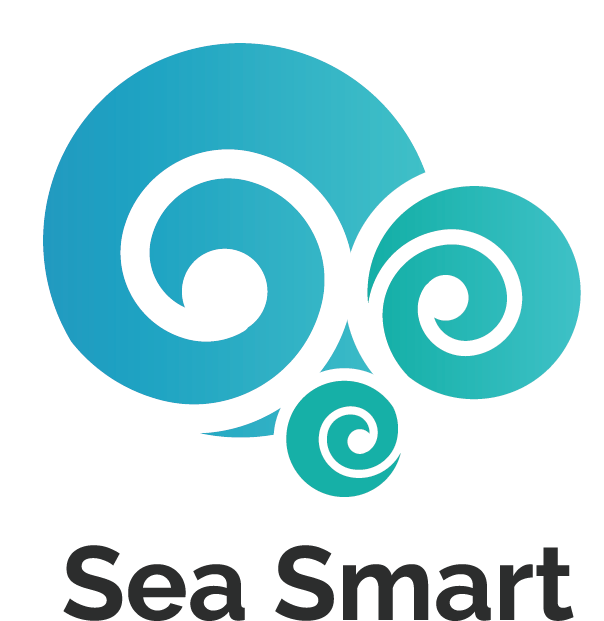Activity - Echolocation and Underwater Noise
By Brittany Ahmann, Environmental Educator, Sea Smart
The learning concepts of this activity are best suited for elementary-age children, but the activity itself can be fun for any child!
Did you know?
Which ocean animals use echolocation? Cetaceans (dolphins, whales, and porpoises)! Echolocation works by the animal sending out a soundwave which bounces back when it hits something (just like if you’re in a cave). These ‘echos’ can be used for communication, navigating, and finding prey (1)! You can help your family learn about echolocation by playing this game, similar to Marco Polo.
How echolocation worksWhat will you need?
Speaker/device to play music from
Safe space to play with your eyes closed
Step by step instructions:
1. This game is similar to ‘Marco Polo’. One person will be the ‘whale’ while the other people are ‘fish’. With their eyes closed, the whale claps their hands together, and the fish have to clap back as the echo. The whale then tries to catch the fish by touching them, and this game continues until all fish are ‘caught’. Fish are allowed to move to avoid being caught (predation) and whales can clap as many times as they want to find out where the fish (prey) are.
2. Once the kids have played multiple rounds of this game with different people being the whale, start a new round with loud music playing in the background.
Why this matters:
This activity is fun, but also teaches about the challenges animals, such as the Southern Resident Killer Whales, are being faced with. Echolocation is used similarly to how we use our vision. With all the boats, ships, underwater drilling, and exploration that is occurring worldwide, echolocation is becoming increasingly difficult. There are only 74 Southern Resident Killer Whales left - it is more important than ever for us to work towards reducing underwater noise pollution (2).
After playing this game, have a conversation with ways your family can work towards reducing underwater noise for endangered whales off our coast. Hint: many of our products are shipped to Canada from around the world. Reducing the number of new items we buy can reduce the number of ships coming into Canada. In BC, a portion of our petroleum products are shipped from other countries. Reducing the amount of fuel we use can contribute to reducing the number of ships.
Southern Resident Killer WhalesLiked this experiment?
Show us your experiments on social media and check out our other marine biology activities to do during school closures!
Bibliography
1. The editors of Encyclopaedia Britannica. (2017). Echolocation. Encyclopaedia Britannica. https://www.britannica.com/science/echolocation
2. Fisheries and Oceans Canada. (2018). Protecting Canada’s Endangered Whales. https://dfo-mpo.gc.ca/campaign-campagne/protectingwhales-protegerbaleines/srkw-eng.html



